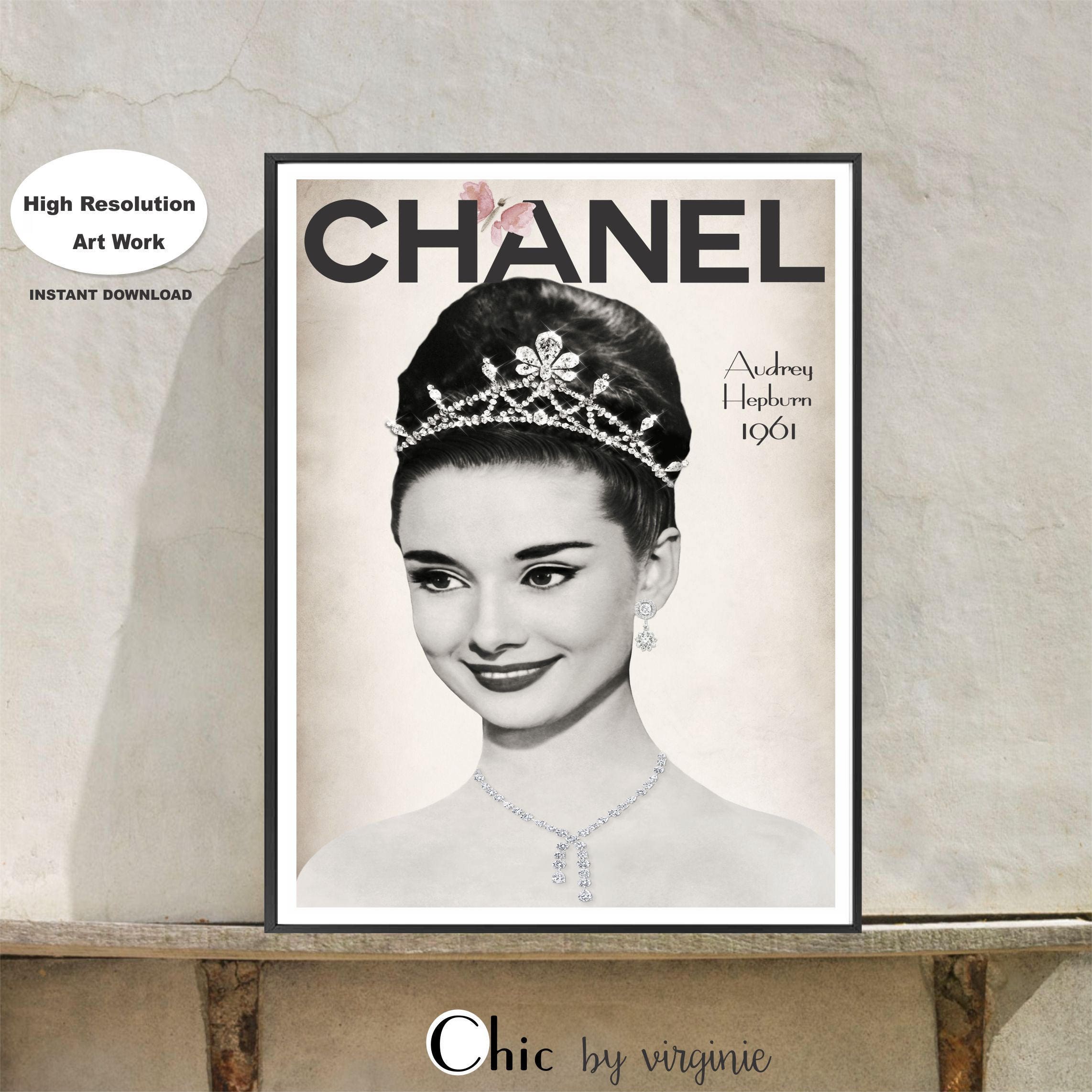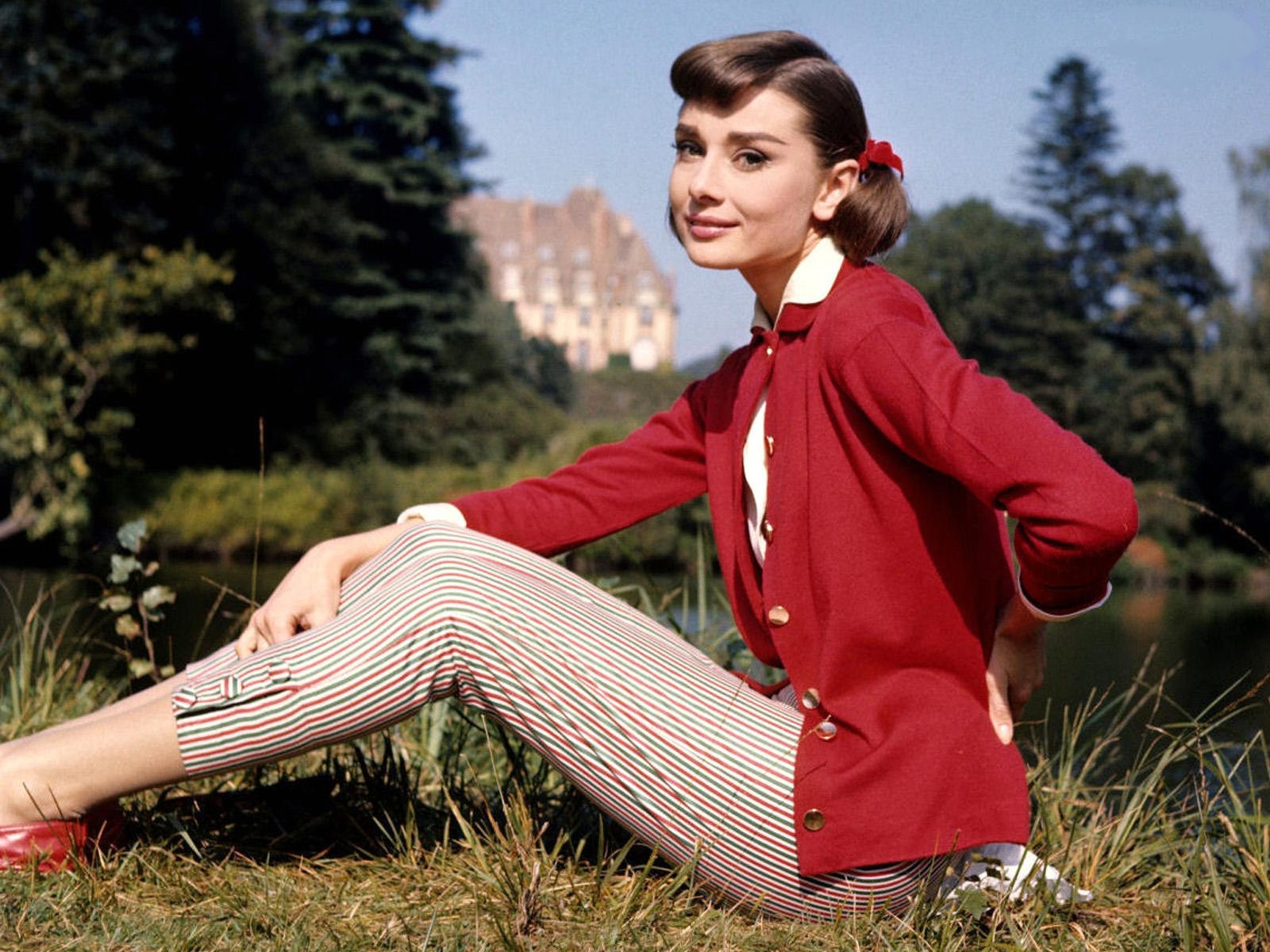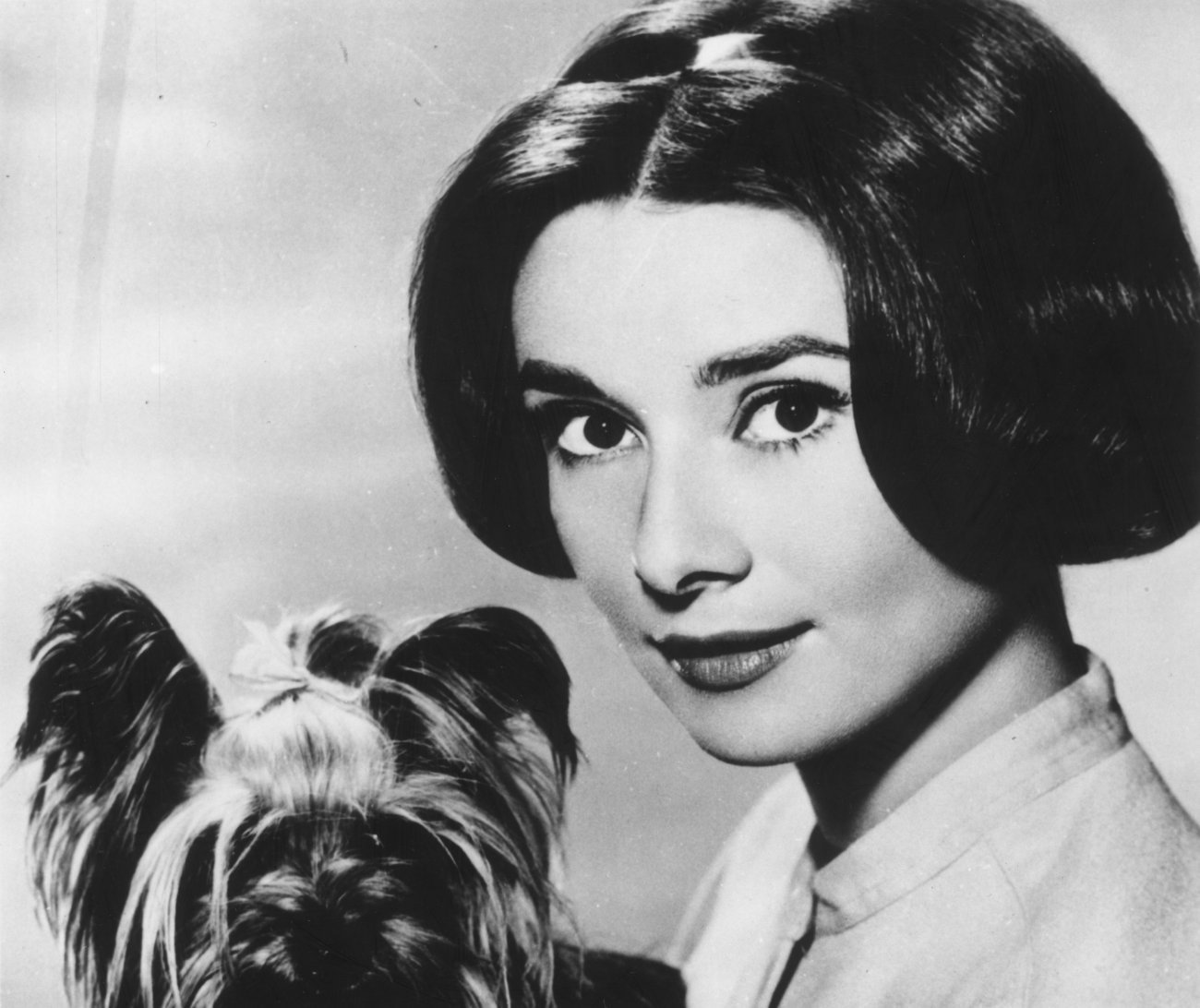Audrey Hepburn In Chanel: The True Story Of An Enduring Style Icon
When you picture timeless elegance, a certain image often comes to mind: Audrey Hepburn, with her distinctive grace and unforgettable style. Her impact on fashion and film is something truly special, a look that still captivates people today. She became, in a way, a symbol of sophisticated charm, and her characters, you know, often showed a daring, cosmopolitan spirit. Her work as an actress and her humanitarian efforts truly set her apart, making her one of Hollywood's most successful stars and a global style icon, a legacy that continues to shine brightly.
People often associate Audrey Hepburn with iconic fashion houses, and a name that pops up quite a bit is Chanel. It's a common thought, isn't it? Her image, after all, seems to blend so seamlessly with the classic, understated luxury that Chanel represents. This connection, you see, is more nuanced than many might first think, involving not just dresses but also, you know, some very specific accessories that made a big splash.
So, we're going to explore the real story behind Audrey Hepburn's connection to Chanel. We'll look at the famous little black dress, clarify some common beliefs, and really, you know, pinpoint the actual Chanel pieces that became part of her legendary on-screen presence. It's a fascinating tale that shows how a true icon can shape fashion history, even when the details are a little bit surprising.
Table of Contents
- Audrey Hepburn: A Life of Grace and Impact
- The Little Black Dress: A Tale of Two Icons
- The Chanel 2.55: An Unforgettable Accessory
- Beyond the Screen: Chanel and Hepburn's Broader Influence
- Frequently Asked Questions About Audrey Hepburn's Style
Audrey Hepburn: A Life of Grace and Impact
Audrey Hepburn, a woman of incredible talent and a kind heart, was born in Belgium. Her journey through the worlds of entertainment and humanitarian work is, in some respects, quite remarkable. She quickly made a name for herself in the United States with her role in *Roman Holiday* back in 1953. This film, you know, turned out to be a smashing success, and she even won an Oscar as Best Actress for her performance, which really put her on the map.
She is, quite simply, best known for her unforgettable roles in films like *Roman Holiday* from 1953, and of course, *Breakfast at Tiffany's* in 1961. These movies helped cement her status as a beloved figure in cinema. In 1954, she married Mel Ferrer, though they later divorced. Beyond her acting, Audrey also dedicated herself to working with the United Nations, striving to improve the lives of many people around the world. Her life, you know, was a blend of artistic achievement and deep compassion.
Audrey Hepburn passed away peacefully in her sleep at the age of 63 from cancer. While it might seem like a common way to go, the way Audrey Hepburn died – how she dealt with it and how she carried herself – really showed her strength and dignity until the very end. Her life was full, and her influence, pretty much, continues to inspire.
Audrey Hepburn: Personal Details and Bio Data
| Detail | Information |
|---|---|
| Full Name | Audrey Hepburn |
| Born In | Belgium |
| Notable Roles | *Roman Holiday* (1953), *Breakfast at Tiffany's* (1961) |
| Major Award | Academy Award (Best Actress, 1954 for *Roman Holiday*) |
| Marital Status | Married Mel Ferrer (1954), later divorced |
| Humanitarian Work | Worked with the United Nations |
| Died At Age | 63 |
| Cause of Death | Cancer |
The Little Black Dress: A Tale of Two Icons
The little black dress, or LBD as it's often called, is a true fashion staple, isn't it? It transcends trends, serving as a blank canvas for personal expression while always maintaining its intrinsic elegance. Now, it's widely accepted that Coco Chanel introduced this iconic garment, you know, way back in 1926, a few years before Hepburn was even born. It was so accessible and so appealing that *Vogue* magazine immediately recognized its potential, calling it a kind of "uniform for all women."
But while Coco Chanel brought the LBD into existence, it was, in a way, Audrey Hepburn who truly catapulted it into global fame, especially through her role in the film *Breakfast at Tiffany's*. Her portrayal of Holly Golightly made that sleek black dress an enduring symbol of understated style. It was 1961, and Hepburn was playing the part of the somewhat troubled call girl, Holly Golightly, and that dress, you know, just became synonymous with her character.
Here's where the story gets a bit interesting and, perhaps, a little confusing for some. The specific little black dress that Audrey Hepburn wore in *Breakfast at Tiffany's* was, in fact, designed by Hubert de Givenchy. It's one of the most famous little black dresses in history, really, and it's as representative of the early 1960s as, say, Yves Saint Laurent’s sheer designs. So, while Coco Chanel originated the concept of the LBD, and Audrey Hepburn made it famous on screen, the *Breakfast at Tiffany's* version was a Givenchy creation. It’s a common point of discussion, you know, when people talk about her classic style.
The Chanel 2.55: An Unforgettable Accessory
Even though the famous little black dress in *Breakfast at Tiffany's* was a Givenchy design, there was, quite simply, a very direct and iconic Chanel piece that made a significant appearance in the film. Holly Golightly, as played by Audrey Hepburn, famously carried the Chanel 2.55 bag during the last part of *Breakfast at Tiffany's*. This bag, you know, perfectly encapsulated Hepburn’s character, given its sophisticated yet practical nature.
The Chanel 2.55, with its quilted leather and chain strap, is a masterpiece of design, truly. Its presence in such a pivotal scene, you know, where Holly is confronting her feelings and making big decisions, really added to the character's aura. It wasn't just a prop; it was, in a way, an extension of her polished yet somewhat complex persona. The bag, you see, became another element that solidified Holly Golightly's unforgettable style, making it a subtle yet powerful nod to the Chanel brand within the film.
This appearance, actually, shows how Audrey Hepburn's style wasn't limited to just one designer. She had a knack for bringing different elements together, creating a look that was uniquely hers. The Chanel 2.55, in her hands, really became more than just a handbag; it became a piece of cinematic history, pretty much, just like the Givenchy dress itself. It's a detail that, you know, often gets overlooked when people think about her iconic *Breakfast at Tiffany's* look.
Beyond the Screen: Chanel and Hepburn's Broader Influence
Audrey Hepburn's classic style, highlighted by her role in *Breakfast at Tiffany's*, truly featured the iconic little black dress, even if it was a Givenchy design. Her influence, you know, went far beyond just one film or one outfit. She was elegance embodied, and her characters, often exemplifying daring, cosmopolitan women, made the little black dress sought after by younger generations for the very first time. This, in a way, speaks to her incredible power as a trendsetter.
Her connection to fashion houses, including a general affinity for the classic style that Chanel represents, is evident in various ways. You can even find "Audrey Hepburn Chanel poster" selections, showing how her image is often paired with the brand in popular culture. There are also, you know, mentions of an "Audrey Hepburn Chanel suit" in various collections of famous images, suggesting that she might have worn Chanel at other times, perhaps off-screen or in other contexts.
Moreover, the Italian artist Pietro Psaier painted a piece titled "Chanel, Audrey Hepburn," as part of the Gabrielle Chanel Paris series. This painting, you know, was sold during fashion weeks in Paris, London, Milan, and Moscow, further solidifying the artistic and cultural connection between Hepburn and Chanel. It shows that, in the minds of many, their names are intertwined, representing a certain pinnacle of fashion and sophistication. It’s a powerful testament, you know, to her lasting impact on the world of style.
Her timeless appeal means that people still want to emulate her look. You can, for instance, find real brands of Audrey Hepburn sunglasses that she wore, and there are also more affordable versions available. This continued interest in her personal style, pretty much, keeps her influence alive and well, even today. She really did leave a mark that goes beyond just acting; she became a true fashion muse for generations.
Learn more about Audrey Hepburn's fashion influence on our site, and discover more about the history of iconic film costumes.
Frequently Asked Questions About Audrey Hepburn's Style
Did Audrey Hepburn wear Chanel in *Breakfast at Tiffany's*?
While Audrey Hepburn famously wore a little black dress in *Breakfast at Tiffany's*, that particular iconic dress was designed by Hubert de Givenchy. However, Holly Golightly, her character, did carry a Chanel 2.55 bag during the later part of the film, establishing a direct connection to the Chanel brand.
Who made the little black dress famous?
The little black dress was introduced by Coco Chanel in 1926. But it was Audrey Hepburn who truly made the garment famous and a global style icon through her unforgettable portrayal of Holly Golightly in the 1961 film *Breakfast at Tiffany's*.
What was Audrey Hepburn's most famous film?
Audrey Hepburn is best known for her roles in films such as *Roman Holiday* (1953), for which she won an Oscar as Best Actress, and *Breakfast at Tiffany's* (1961). Both films, you know, are considered classics and showcase her unique charm and acting talent.
For more details on fashion history, you could check out resources like the Metropolitan Museum of Art's costume collection, which often features iconic designs.

Audrey Hepburn Chanel Chanel print Fashion Wall Art | Etsy

Audrey Hepburn Wallpapers Images Photos Pictures Backgrounds

Audrey Hepburn - Audrey Hepburn Photo (21766981) - Fanpop